Table of Contents
We’re spending more time online than ever before, and this shift has transformed the way we shop. Shoppable content is leading the charge, turning everyday digital interactions into seamless shopping experiences. By integrating purchasing options directly within the content, brands can eliminate friction in the buyer journey.
This approach opens up new opportunities for ecommerce businesses to connect with consumers at key moments, boosting conversions and enhancing the overall shopping experience. Shoppable content empowers brands to engage customers when they’re most receptive, making it easier than ever to drive sales.
To stay ahead in today’s fast-evolving digital world, brands must leverage strategies like user generated content for authenticity, tap into social commerce for a smooth shopping experience, and optimize for trends like voice search and sustainability. These tactics will help your brand remain relevant and competitive in a crowded marketplace.
Do you want to transform your marketing strategy and create unforgettable experiences that keep customers coming back for more? Keep reading to discover how you can leverage shoppable content to elevate your brand and drive long-term success.
Shoppable content refers to any form of content—whether it’s a social media post, video, image, or blog—that allows consumers to directly purchase products through interactive elements embedded within that content.
Unlike traditional marketing materials that require users to visit a website and search for a product, shoppable content makes it easier for consumers to purchase items in real-time while they are still engaged with the content.
UGC shoppable content integration refers to the practice of embedding purchasable links directly within user generated content, allowing consumers to shop for products featured in posts, reviews, or photos shared by other customers.
This combination empowers brands to showcase real-life experiences with their products while also making it easy for consumers to buy items on the spot, all within the same platform.
For example, a brand might feature a customer’s Instagram photo in a social media ad, with clickable links that take viewers directly to the product pages. This creates a seamless experience where social proof and shopping collide, ultimately simplifying the path to purchase.
This section explores the key benefits of shoppable content and how it differs from traditional eCommerce strategies. Unlike conventional methods that require customers to leave content and navigate to separate product pages, shoppable content enables seamless content and shopping experience integration.
Shoppable content enables seamless content and shopping experience integration
By integrating product discovery directly into engaging content, brands can reduce friction and increase impulse purchases, ultimately driving higher conversion rates and better customer retention. Approximately 76% of American consumers have purchased a product they discovered on social media, with 11% making the purchase immediately and 44% completing it later.
Social proof is a powerful psychological tool that influences purchase decisions. Consumers are more likely to trust a product if they see that others have already bought and enjoyed it. Shoppable content naturally incorporates social proof through customer reviews, influencer endorsements, and user generated content.
When potential buyers see influencers or everyday users interacting with a product in real-time, it creates a sense of authenticity and trust: whether it’s a celebrity wearing a brand’s clothing or a real customer showcasing how a gadget works in their home, shoppable content often highlights these social signals.
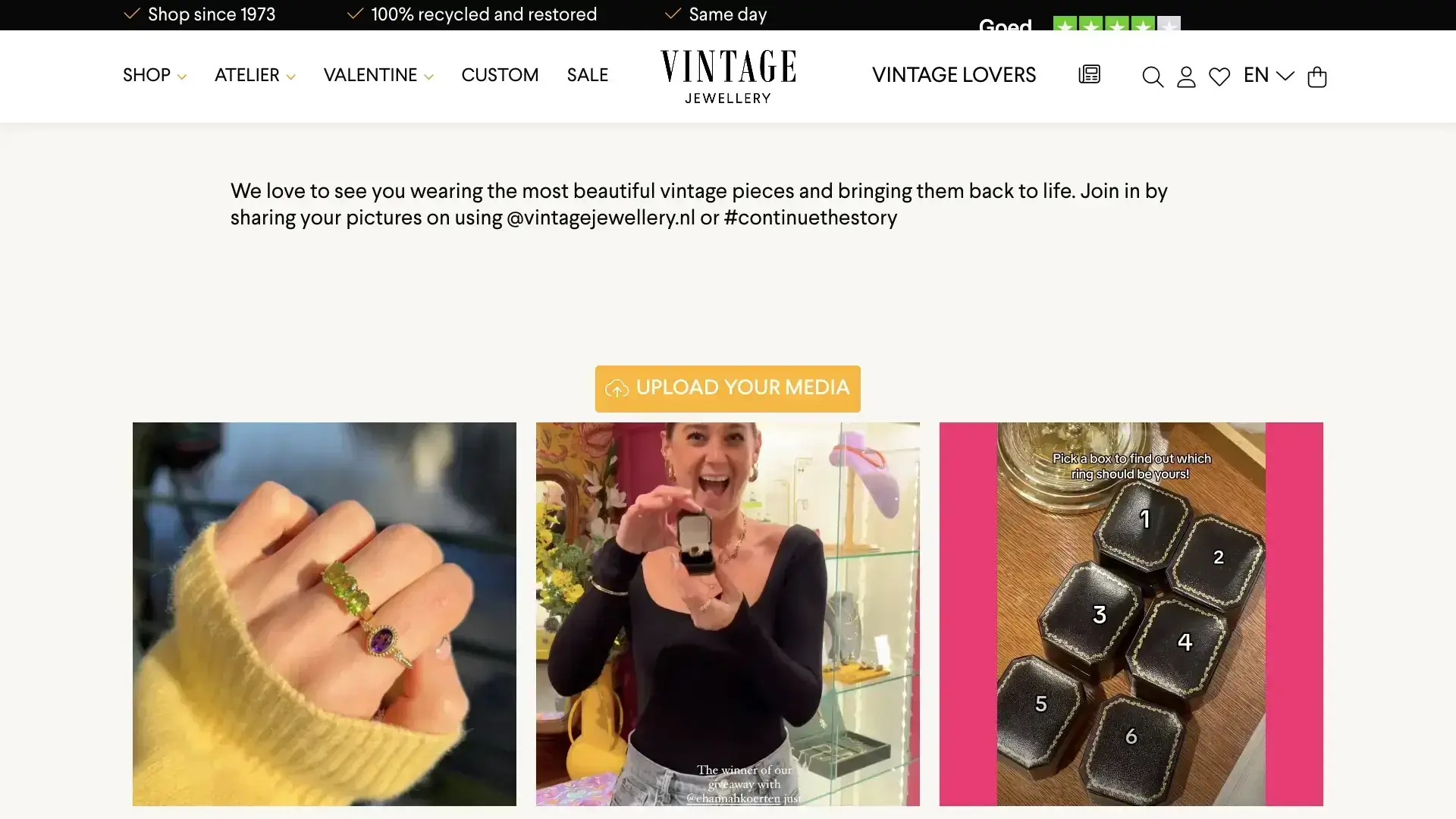
This not only adds credibility but also enhances product desirability. Shoppable posts on social media platforms, for instance, leverage social proof by allowing users to instantly see the popularity of a product or see it in action through relatable content.
One of the most exciting aspects of shoppable content is how it empowers consumers to create and share their own content, thereby contributing to the brand’s marketing efforts.
By incorporating UGC in shoppable posts, brands can showcase real customer experiences, reviews, and testimonials, all of which boost the credibility and relatability of the products. This also invites more potential buyers to visualize how the product will fit into their lives, further fostering emotional connections with the brand.
In addition, brands can actively encourage UGC through social media challenges, campaigns, and incentives for customers to share their photos or videos using the product. Sophie and Lucie do it by giving a monthly discount to the winner of the featured UGC.
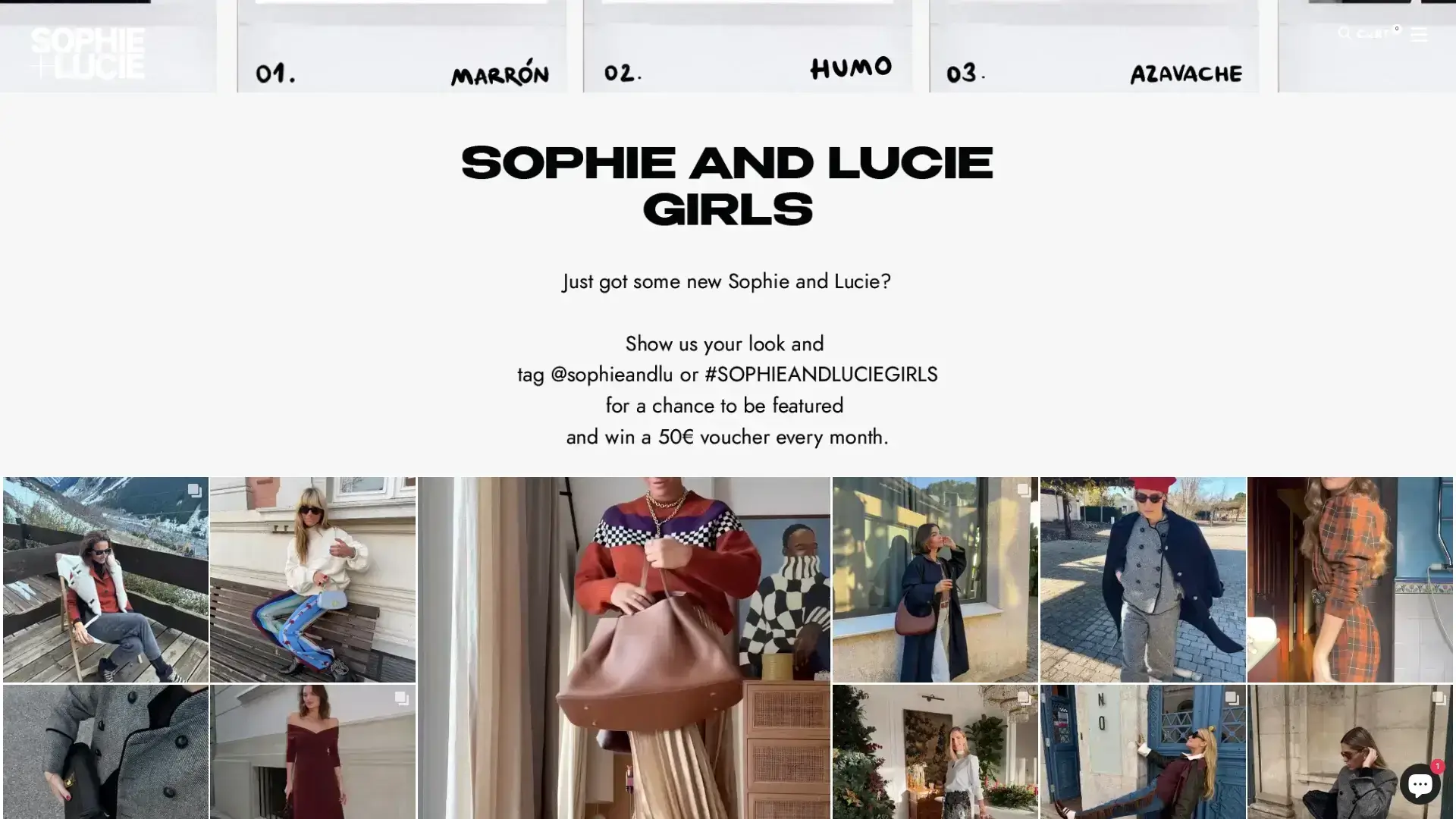
UGC not only builds trust but also promotes a sense of community, where customers feel they are part of a larger movement or trend.
Shoppable content enables a dynamic interaction between brands and their community. Whether it’s through interactive Instagram stories, TikTok videos, or Pinterest pins, brands have the chance to engage with their audience in a more organic and personalised manner.
By allowing customers to directly purchase products within the content they are already interacting with, brands significantly reduce the friction traditionally associated with eCommerce, leading to higher engagement and, ultimately, more conversions.
Furthermore, shoppable content is an excellent way to enhance the sense of exclusivity. Flash sales, limited-time offers, and special product releases can be incorporated seamlessly into the content, creating a sense of excitement and prompting immediate action from customers.
This makes shoppable content not just a method for purchasing products but also a strategic tool for driving conversions and increasing average order value.
Shoppable content doesn’t just sell products; it also builds communities. Social media platforms have made it easier than ever for brands to connect with consumers in a more informal and authentic manner.
By using shoppable content, brands can create a two-way dialogue with their audience, encouraging them to share feedback, comment on posts, or participate in discussions related to their favourite products.
In fact, brands that foster a strong sense of community around their products often see higher levels of customer retention and more word-of-mouth recommendations, especially those offering white-label support. These organic interactions help create a stronger bond between the consumer and the brand, leading to increased trust, satisfaction, and long-term customer loyalty.
Social media platforms have become some of the most powerful tools for shoppable content, with features like Instagram Shopping, Facebook Shops, and Pinterest Shopping allowing brands to tag products directly in posts.
Social media platforms let users tap on images or videos to view product details, including pricing, size options, and direct purchase links, all without leaving the app. UGC videos, in particular, offer a highly engaging way for brands to showcase products in action, making them a natural fit for shoppable content.
Shoppable content enables viewers to click on featured products within the video itself for an immediate purchase experience. Platforms like YouTube, Instagram or Pinterest have seamlessly integrated this feature, making it easy for users to shop while enjoying the content. Check out this shoppable social media content from Havaianas:
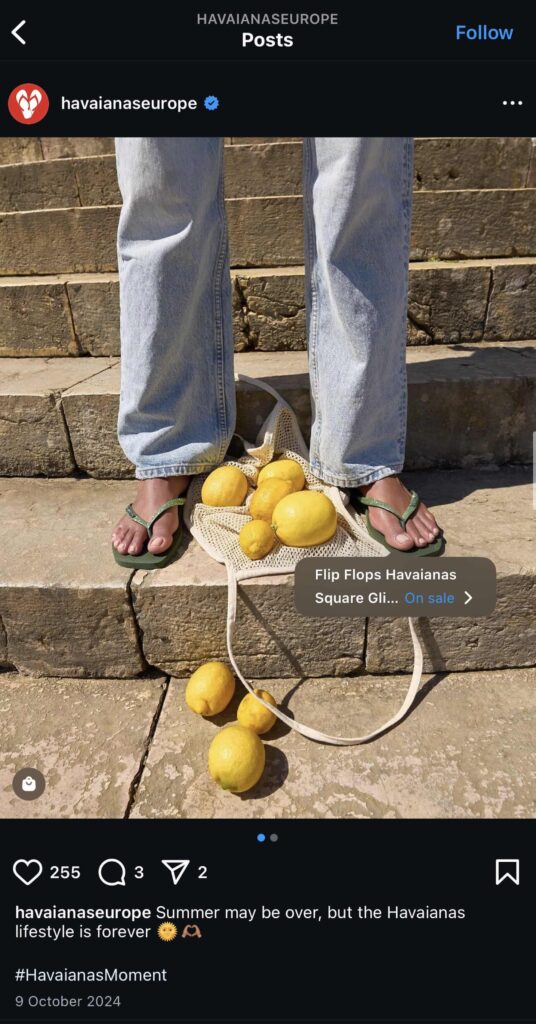
Social media Stories (such as those on Instagram or Snapchat) provide an immersive, temporary content format that brands can use for shoppable content. These short-lived posts often feature clickable product tags, giving users an easy way to purchase the items they see while engaging with the content.
Shoppable stories are designed to feel casual and authentic, often showcasing behind-the-scenes moments, flash sales, or influencer takeovers.
Email marketing remains a highly effective channel for conversions, and shoppable emails are an excellent way to blend email content with commerce. Prénatal Netherlands includes a UGC shoppable section at the bottom of their newsletters.
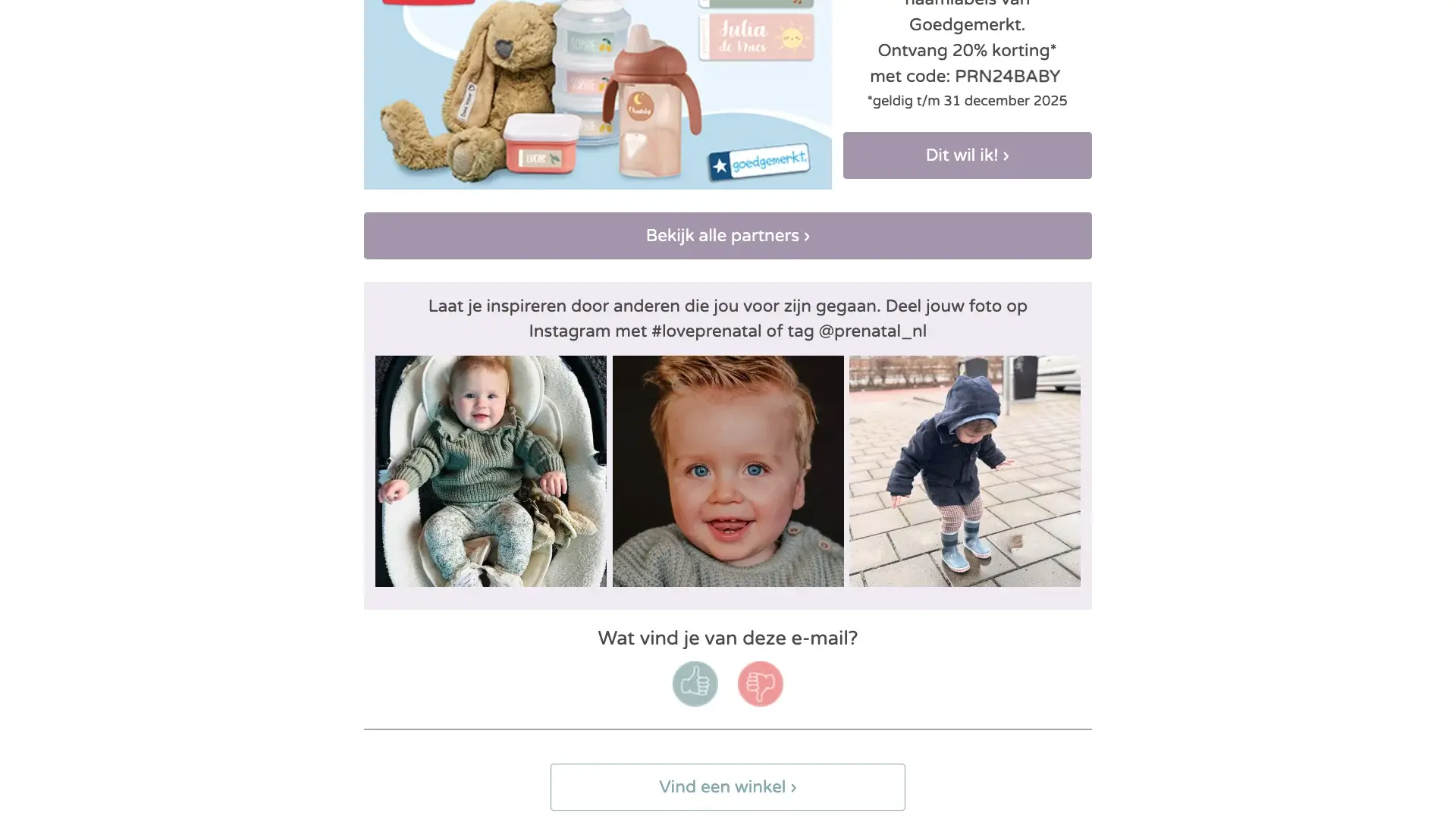
With shoppable emails, brands can embed UGC images, links, and even purchase buttons directly in the email itself. Recipients can click on a product or user-generated content piece and be redirected to the brand site, leading to quicker conversions.
Of course, the success of these emails also depends on reaching the right people and sending the right kind of email. If you are including UGC in cold emails, it’s essential to know how to find email addresses in the first place.
Here’s a brief explanation of how user-generated content can be used effectively in different email types:
Product galleries are essentially collections of items displayed in a visually appealing way. In these galleries, each product is clickable, allowing consumers to get more information or make a direct purchase. Check out Lampemesteren’s shoppable gallery embedded on their website.
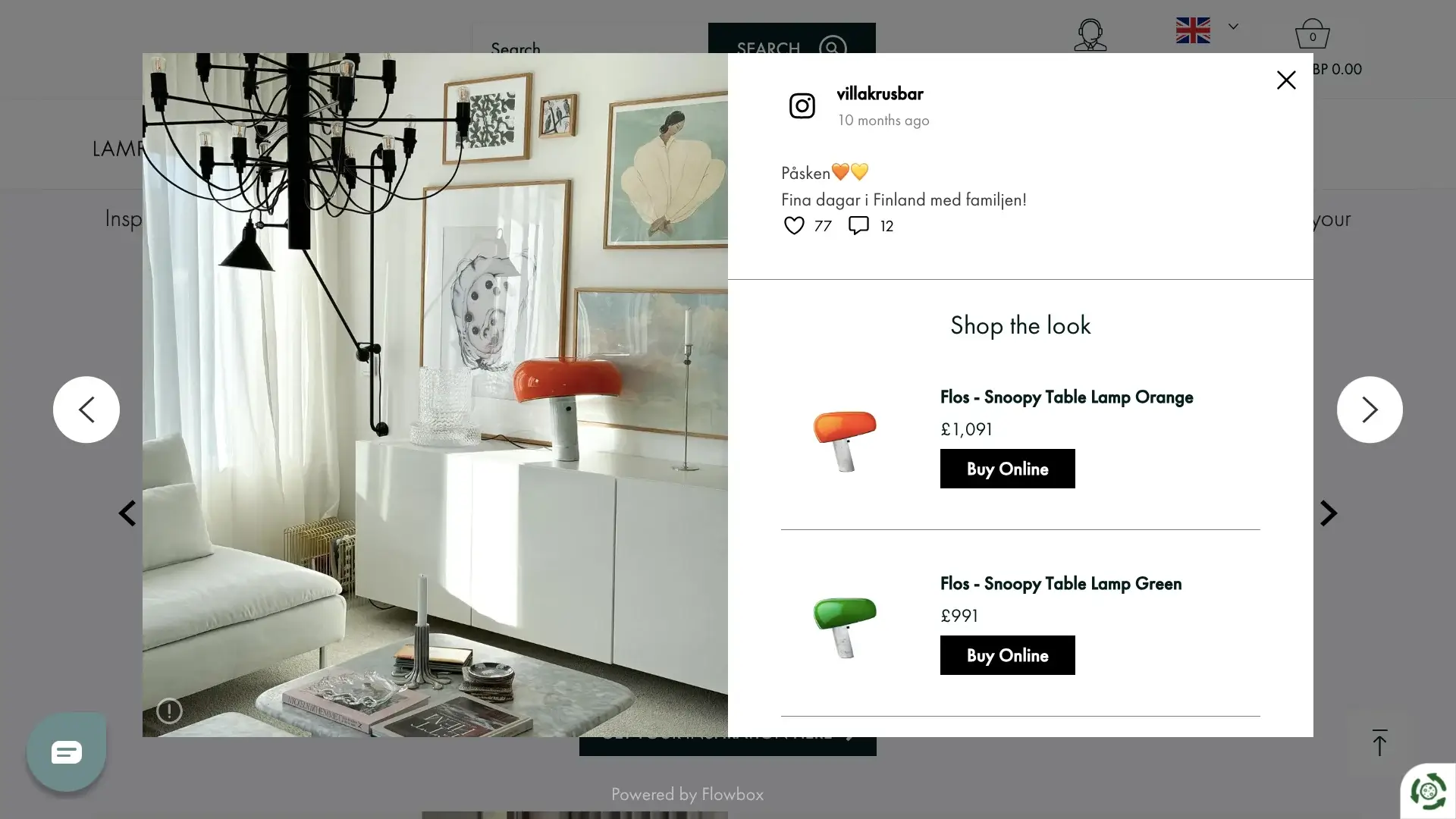
Galleries can be embedded into websites, landing pages, or blog posts and can display multiple products at once, often with the ability to filter by category or price range. In this case, Lampemesteren is using the Flowbox UGC Platform to showcase a gallery with shoppable content by adding tags to the content and a button to “Buy Online”.
If you want to learn more about the topic, check out these user generated content galleries to discover how other brands are integrating theirs.
Shoppable ads allow consumers to directly purchase products from an advertisement without leaving the platform they are browsing. Whether it’s a banner ad on a website or a sponsored ad on social media, shoppable ads combine the power of targeted advertising with the ease of instant purchase.
These ads typically feature clickable images or embedded product links that lead to a product page or checkout page. Alohas is leveraging this type of content to impact their audience and convert more.
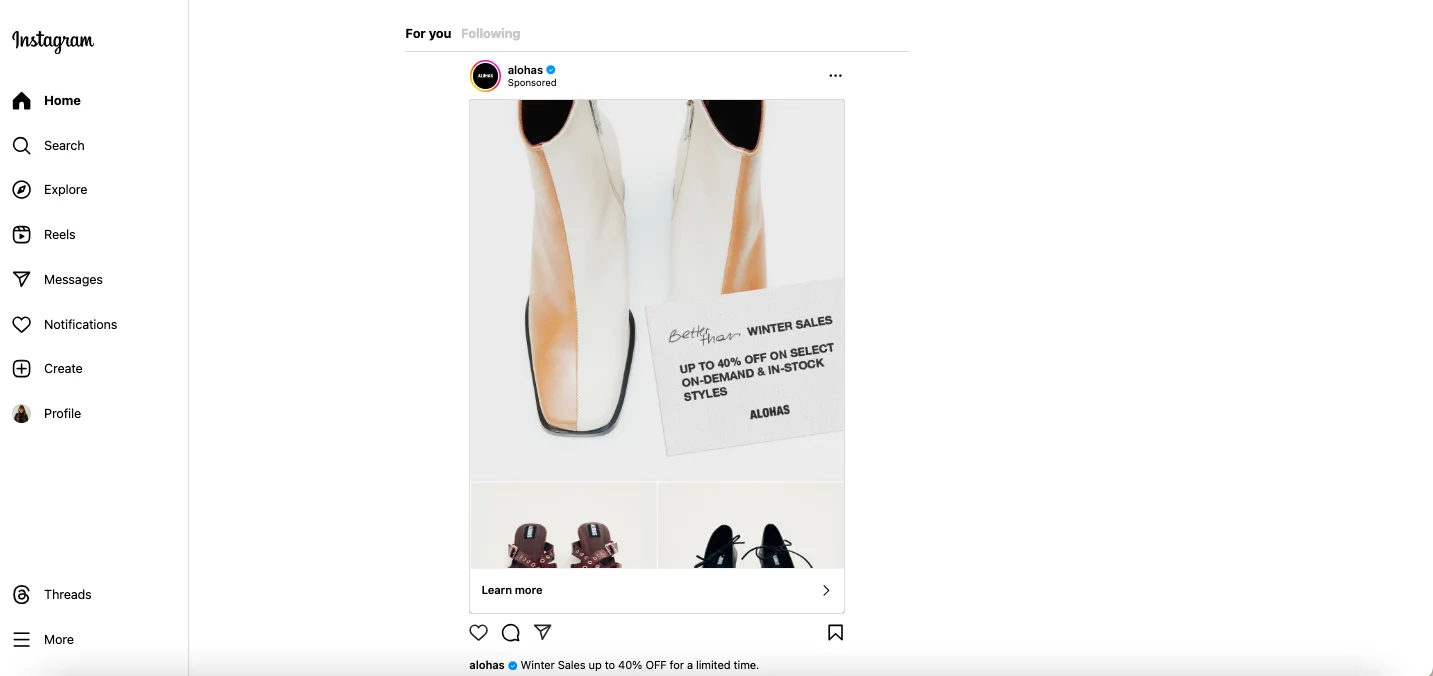
By implementing the Shoppable Ads, brands can experience multiple benefits like:
Shoppable content is now starting to rise also in the world of blog content with shoppable blog posts. It’s a blend of content and commerce that allows readers to shop directly from the blog posts they are reading in just a few clicks.
Alternative Flooring have a section on their blog posts where they display user generated content galleries with shoppable content to inspire the users while they learn.
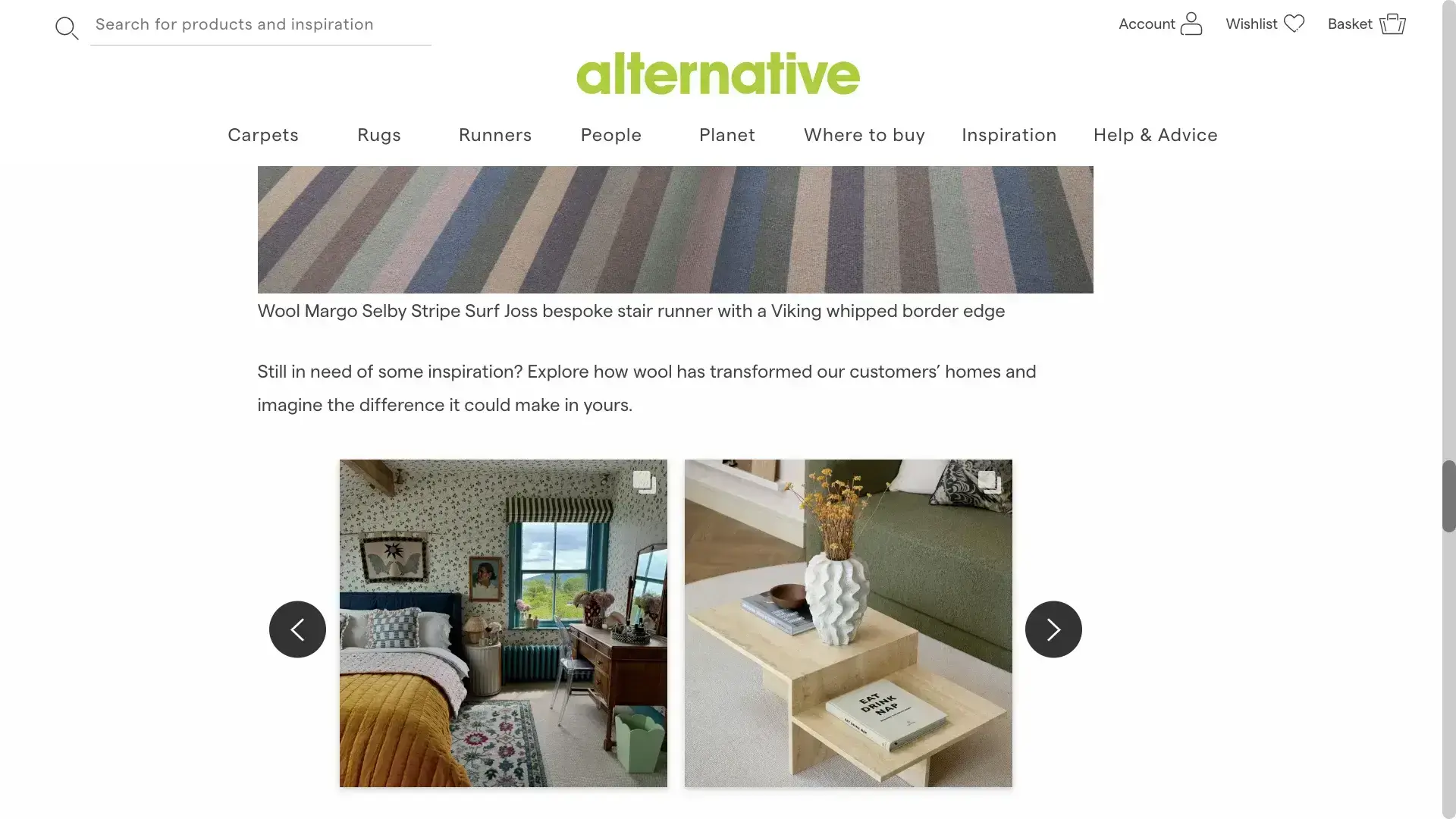
Incorporating shoppable content into your blog is very easy. You only need to use shoppable tags or links to embed your products directly into your article. In this sense, shoppable content platforms to do this automatically can be very helpful and time-saving.
Including a shoppable UGC gallery in the no results or 404 page helps prevent users from leaving your site. This is a smart way to keep users engaged even when they encounter an issue. Instead of losing potential customers due to a 404 or other error page, you can turn the situation into an opportunity by showcasing products or user generated content related to your brand.
This gallery can feature items that are trending or that align with the user’s browsing history, encouraging them to continue shopping.
Babboe includes a fans section on their 404 page, customised with a UGC gallery. By adding a shoppable gallery to your error page, you can redirect users’ attention to what’s relevant and exciting, thus reducing bounce rates and increasing the likelihood of conversions.
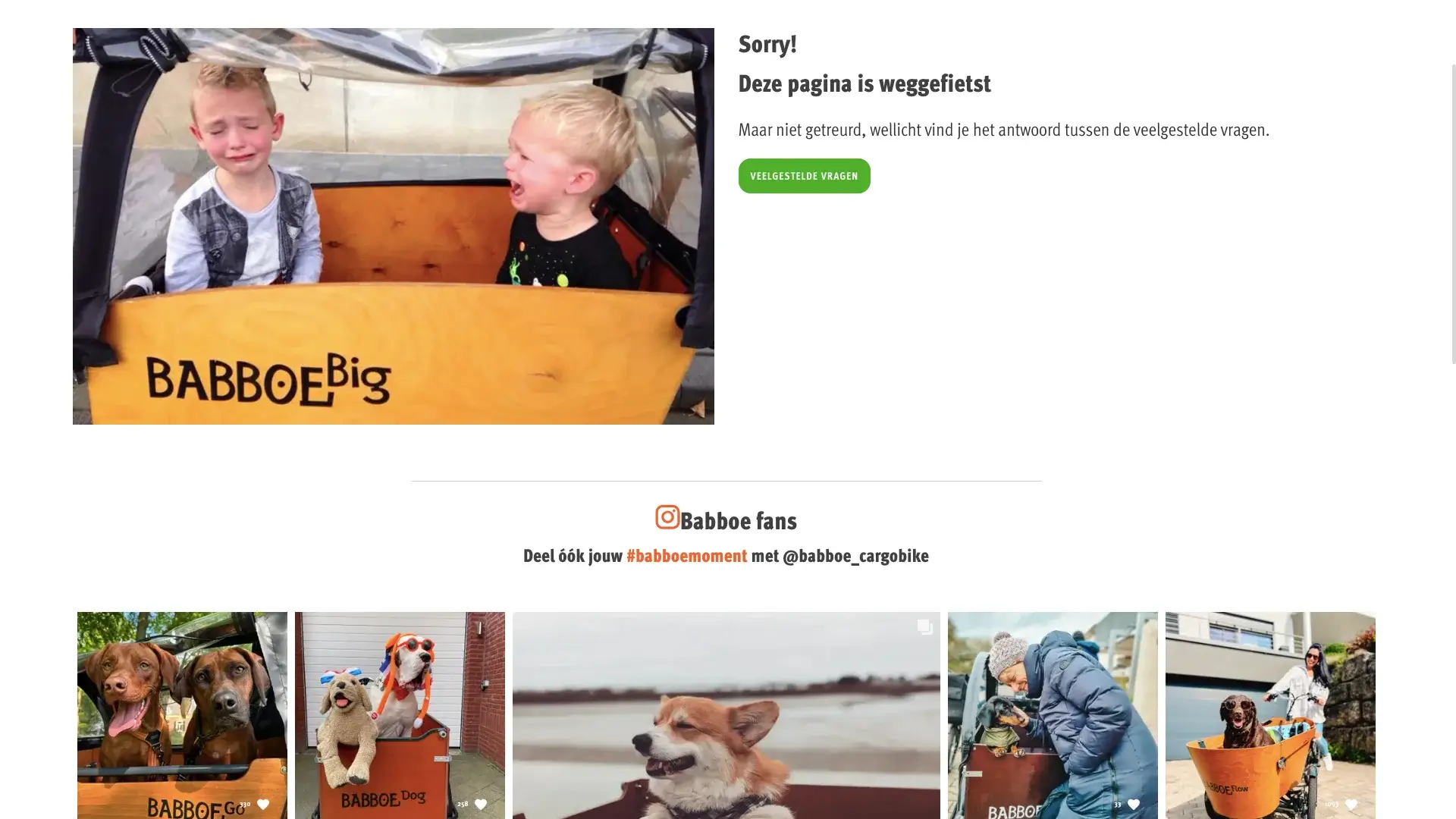
Moreover, highlighting authentic UGC adds a personal touch and builds trust, as users often feel more connected to content created by their peers. It’s an excellent way to keep the shopping experience seamless and engaging, even when things go wrong.
It doesn’t just have to be an image either. There are plenty of shoppable video examples too in this article.
Shoppable content has become an essential part of eCommerce and digital marketing strategies. Here are some effective strategies to integrate shoppable content into your marketing approach:
Curate customers’ photos and videos featuring your products and make them shoppable on your website and social media platforms.
Encourage your clients to share their experiences with branded hashtags and reward them with discounts or features on your pages. You can display all this content into UGC carousels and galleries.
Influencers and user generated content have immense power in driving trust and engagement. By integrating influencers into your shoppable content strategy, you can amplify your reach and authenticity.
Influencers can create engaging videos, stories, or posts that feature your products, allowing followers to click through directly to purchase.
Additionally, encouraging your customers to share their own experiences and tag your brand not only boosts social proof but also generates content that resonates with a wider audience. This user-driven content feels more authentic and can lead to higher conversion rates.
A well-designed digital lookbook or product catalog can do wonders for engaging your audience, and making them shoppable is even better.
On your website, email campaigns, or social media platforms, you can create interactive lookbooks where customers click on images to instantly view product details or add items to their cart. This transforms a traditional browsing experience into an immersive shopping experience.
Adding hotspot links within lifestyle photos or curated outfits allows your audience to engage with the content while making quick purchase decisions. Plus, incorporating shoppable links into email campaigns is a smart way to promote new collections, seasonal items, or special promotions, all while giving your customers a smooth, frictionless shopping journey.
This tactic works particularly well for fashion, home furnishings, and lifestyle brands that rely on high-quality imagery to attract consumers.
Use Flowbox’s dynamic product ads, where they automatically showcase products based on users’ behaviour. Ensure these ads are visually appealing and include a direct ‘’Shop Now’’ call-to-action button.
With Flowbox UGC Platform you can take your ecommerce strategy into the next level by leveraging your customers’ generated content.
Besides shoppable content, another valuable feature of Flowbox is the integration of a non-shoppable gallery on a brand’s website. This gallery highlights UGC without showcasing any type of product, with the purpose of providing social proof and engagement to the brand. Check out Misako’s integration of a non-shoppable gallery.
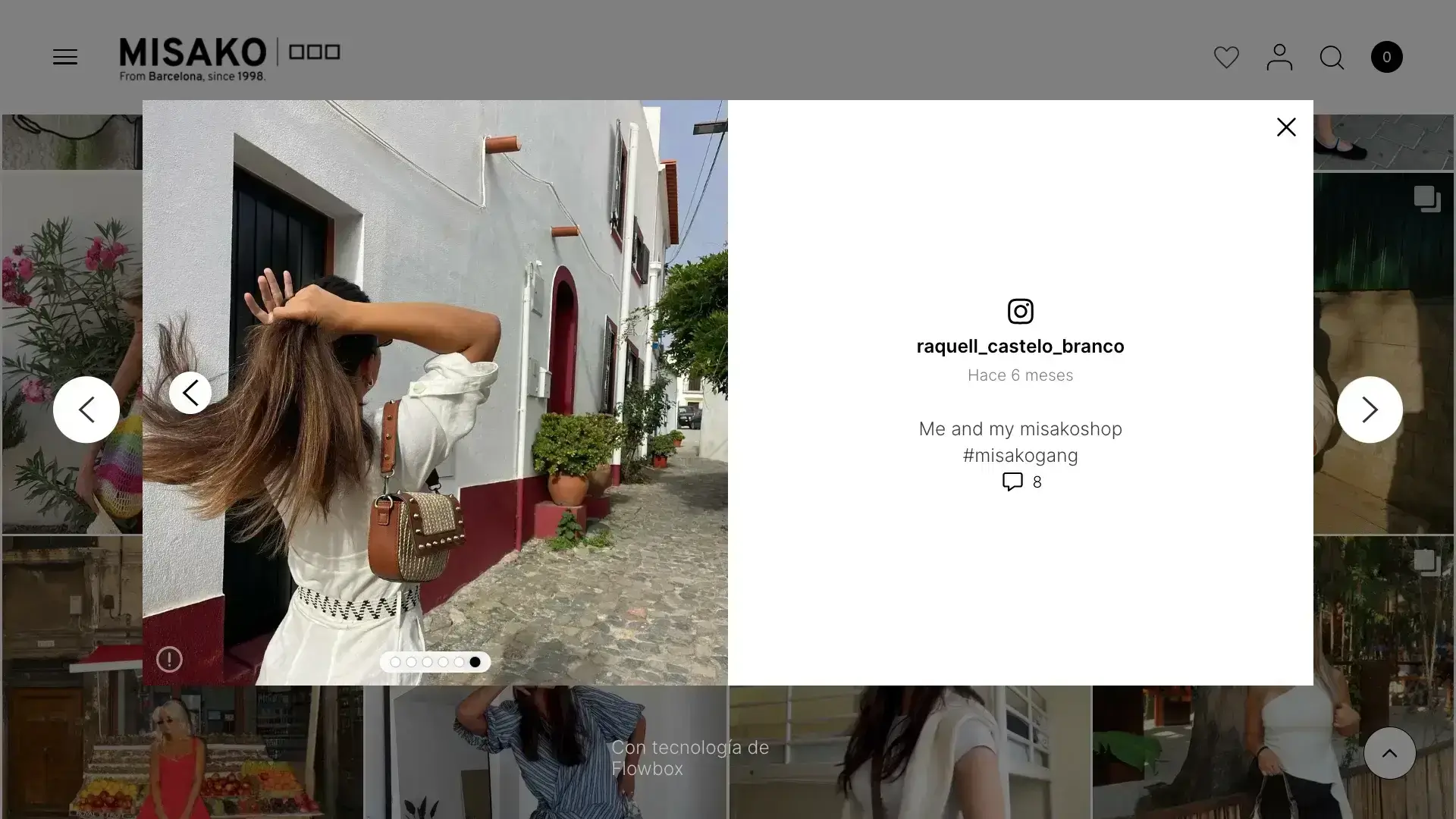
However, shoppable content enhances the shopping experience by making it faster and more convenient for customers to find and purchase items they love.
The beauty of shoppable content lies in its flexibility and adaptability to various platforms and formats. Whether through interactive social media posts, engaging videos, or personalised emails, there are endless possibilities for brands to make your content both entertaining and actionable.
By selecting the right type of shoppable content for your target audience and marketing objectives, brands can streamline the path to purchase and enhance the overall customer experience.
It is evident that shoppable content galleries are not merely optional for eCommerce brands—they are essential. These types, benefits and strategies of shoppable content galleries are just the beginning; there’s a whole world of possibilities waiting to be explored! Check these shoppable content examples to get inspiration on how to implement it on your eCommerce.
Contact us and start experiencing the power of a UGC Platform today.